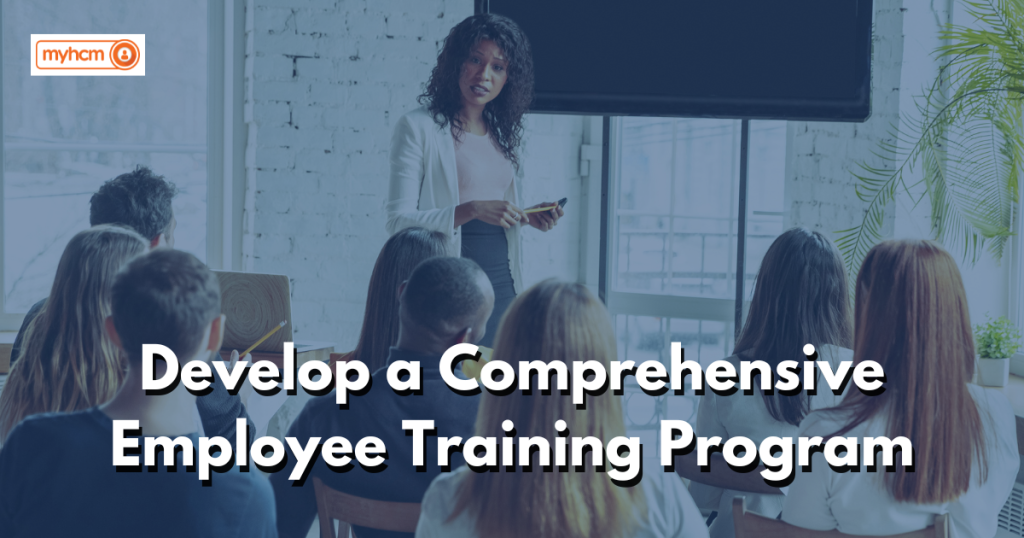A comprehensive training program is essential for every business aiming to improve productivity, boost employee satisfaction, and foster professional development. A well-designed training program ensures that employees acquire the skills necessary to perform their jobs efficiently and grow within the company. This article will guide you through the steps to develop a comprehensive program that benefits both employees and employers.
Identify Training Needs
The first step in developing a comprehensive employee program is identifying the specific needs of your organization. Understanding what skills and knowledge are lacking is crucial to creating a targeted and effective program. A comprehensive employee training should be based on clear data, such as employee performance metrics, feedback from managers, and the business’s long-term goals.
By identifying these gaps, you can ensure that your program addresses the most critical areas for improvement. This approach ensures that your comprehensive employee training is not just a formality but a strategic tool for business growth.
Set Clear Objectives for Employee Training Program
After identifying the training needs, it’s important to set clear and measurable objectives for your comprehensive employee training program. The objectives will serve as a roadmap, helping you to structure the training effectively and ensure that it aligns with company goals. A successful comprehensive training program should aim for specific outcomes, such as improving technical skills, enhancing leadership abilities, or increasing employee engagement.
In addition to setting objectives, it is vital to communicate these goals clearly to the employees. Let them know what they are expected to achieve and how the comprehensive employee training will help them grow in their roles.
Design the Training Content for Employee Training Program
The design of the content is a crucial step in developing a comprehensive employee training program. The content should be tailored to the needs of the employees and the company. A successful comprehensive employee training program includes a variety of learning formats, such as workshops, online modules, and hands-on training. Incorporating multiple formats helps cater to different learning styles, making the program more inclusive and effective.
Make sure the content is engaging and interactive to keep employees interested. A comprehensive employee training program that is boring or irrelevant will not achieve the desired results. Regular updates to the training content are also necessary to keep it aligned with evolving business needs.
Implement the Training Program
Once the content is designed, it’s time to implement your comprehensive training program. The key to successful implementation is creating a structured timeline and ensuring all employees are aware of the training schedule. Make use of learning management systems (LMS) to deliver online training modules efficiently and track employee progress.
During the implementation of your comprehensive training program, it’s essential to provide ongoing support. Encourage open communication, where employees can ask questions or provide feedback. This ensures that the training is practical and addresses the specific challenges they might face in their roles.
Monitor and Evaluate the Program
After implementation, monitoring and evaluating the success of your comprehensive training program is critical. Use metrics such as employee feedback, performance improvements, and business results to assess the program’s effectiveness. Regular evaluations allow you to identify what’s working well and what needs improvement.
By continuously improving your comprehensive training program, you ensure it remains relevant and effective over time. Regular assessments help keep the training aligned with both employee development needs and the company’s strategic goals.
Promote Continuous Learning
One key aspect of a comprehensive training program is promoting a culture of continuous learning. Training should not be viewed as a one-time event but as an ongoing process. Encourage employees to take advantage of additional learning opportunities through online courses, workshops, or certifications.
A comprehensive training program should also include leadership development initiatives to prepare employees for higher roles within the company. This continuous learning approach ensures that your workforce remains competitive and engaged, ultimately contributing to the company’s long-term success.
Conclusion
Developing a comprehensive training program requires careful planning, clear objectives, and a commitment to continuous improvement. By identifying training needs, setting measurable goals, designing engaging content, and monitoring results, you can create a training program that boosts skills, enhances job satisfaction, and supports business growth. A well-executed comprehensive training program is an investment in the future of your organization, ensuring that employees are equipped with the knowledge and skills they need to succeed.

Pingback: Digital HR Revolution: Reviving the HR experience - Blogs - MyHCM
Pingback: Employee Management System - AI Powered - Blogs - MyHCM
Pingback: Learning Management: A New Phase - Blogs - MyHCM